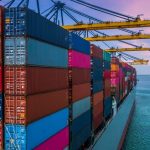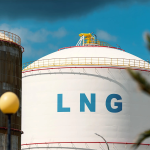Rates for shipping containers from east Asia and China to the US edged lower this week as carriers have reduced short-term rates to both coasts to stimulate demand ahead of Lunar New Year (LNY).
Analysts at freight forwarder Flexport said that pre-LNY demand has slowed, resulting in low carrier vessel utilization rates and a softening market.
Rates from Shanghai to New York fell by 4% from the previous week and rates from Shanghai to Los Angeles fell by 5%, according to supply chain advisors Drewry and as shown in the following chart.
Drewry expects spot rates to decrease slightly in the coming weeks due to increased capacity.
Global average rates fell by 3%, as shown in the following chart.
Flexport analysts said that space remains constrained following the pre-LNY rush, especially on fixed allocations, but some strings still have open space, especially to the West Coast and, to a lesser extent, the East Coast.
Carriers have planned 11% blank sailings during the LNY period, aligning with network adjustments.
Container ships and costs for shipping containers are relevant to the chemical industry because while most chemicals are liquids and are shipped in tankers, container ships transport polymers, such as polyethylene (PE) and polypropylene (PP), are shipped in pellets.
They also transport liquid chemicals in isotanks.
USG-ASIA CHEM TANKER RATES TICK LOWER
US chemical tanker freight rates assessed by ICIS were steady to lower for most trade lanes this week, with slight decreases on the US Gulf (USG) to Asia trade lane.
There are bigger gaps of vessel space showing in January. Therefore, there are a backlog of outsiders looking for opportunities, which weighed on spot rates this week, pushing them lower.
From the USG to Rotterdam, there has been a lull in activity on this route as contract space for January is soft, leaving players looking for additional cargoes to complete space for a few tanks. Styrene monomer, glycol and methanol has been said to be a popular commodity within this trade lane.
As a result, smaller parcel freights have taken a steep drop from January loadings, while larger parcel sizes seem destined for the same and rates decreasing, according to a broker, various glycol and methanol cargos have keen interest along this route.
From the USG to Brazil, there are a few outsiders open for the end of January to early February, along with some regulars with some small pocket space. This trade lane is expected to face some downward pressure as the list of fully open vessels presently continues to grow, according to a broker.
Meanwhile from the USG to the Mediterranean, there is still a bit of open space, and the market quotes continue to come in for February. This route after a bit of uncertainty is seeing rates steadying for the balance of open space.
On the other hand, bunker prices were higher this week following the rise in energy prices.
Source: By Adam Yanelli, With additional reporting by Kevin Callahan, ICIS





